By Paul Middents
Frederick Shelley describes Howard's first two models EH 1 and EH 2. An 1874 catalog pictures a Model
31 striker and a Model 32 timepiece. After 1874 Howard provides only two reference points for Model Numbers.
| 1887 | 1888 | 1889 | 1890 | 1891 | 1892 | 1893 | 1894 | 1895 | 1896 | |
| 12 ft 2 dial post | 8 | 3 | 8 | 9 | 10 | 8 | 3 | 4 | ||
| 12 ft 4 dial post | 3 | 1 | 0 | 1 | -1 2 | 0 | 0 | 0 | ||
| 15 ft 2 dial post | 1 | 1 | 1 | 0 | 2 | 0 | 1 | 1 | ||
| 15 ft 4 dial post | 0 | 1 | 0 | 1 | -17 2 | 1 | 0 | 0 | ||
| 17 ft 4 dial post No. 0 Timepiece | 7 | 8 | 7 | 11 | 8 | 1 - 2 | 5 - 2 | 0 | ||
| No. 0 Timepiece No. 0 Striker | 3 | 4 | 3 | 4 | 1 | 3 | 3 | 4 | ||
| No. 0 Quar. Striker | 2 | 2 | 0 | 1 | 0 | 0 | 3 1 | 4 | ||
| No. 1 Time Piece | 4 | 5 | 4 | 10 | 7 | 6 | 3 | 7 | ||
| No. 1 Time Piece | 4 | 5 | 4 | 10 | 7 | 6 | 3 | 7 | ||
| No. 1 Striker | 24 | 24 | 22 | 21 | 21 | 22 | 17 | 29 | ||
| No. 1 Quar. Striker | 0 | 2 | 2 | 4 | 3 | 2 | - 1 | - 1 | ||
| No. 2 Timepiece Westminster Chimer | 5 | 3 | 6 | 5 | 5 | 9 | 5 | 0 | ||
| No. 2 Striker | 14 | 14 | 15 | 9 | 11 | 11 | 4 | 6 | ||
| No. 2 Quar. Striker | 0 | 2 | 2 | 4 | 3 | 1 | 0 | 1 | ||
| No. 3 Time Piece West. Chimer | 5 | 3 | 6 | 5 | 5 | 9 | 5 | 0 | ||
| No. 3 Striker | 7 | 2 | 3 | 7 | 3 | 6 | 2 | 2 | ||
| No. 3 Quar. Striker | 0 | 0 | 3 | 0 | 0 | WC 1 | 1 | WC 1 | ||
| No. 4 Time Piece N0. 3 West. Chimer | 0 | 0 | 0 | 0 | 0 | 0 | 0 | 1 | ||
| No. 4 Striker | 0 | 0 | 0 | 0 | 0 | 1 | 1 | 0 | ||
| No. 4 Quar. Striker | 0 | 0 | 0 | 0 | 0 | 1 | 0 | 0 | ||
| 81 | 72 | 77 | 88 | 79 | 86 | 115 | 72 |
This is taken from the Tower Clock records Jan. 1888 - Dec 1901
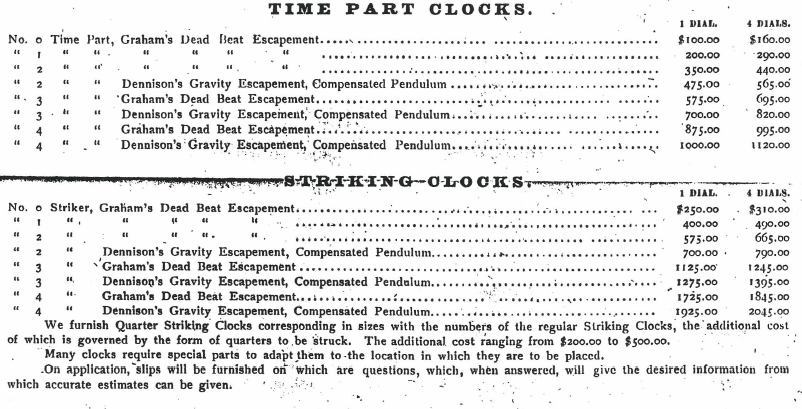
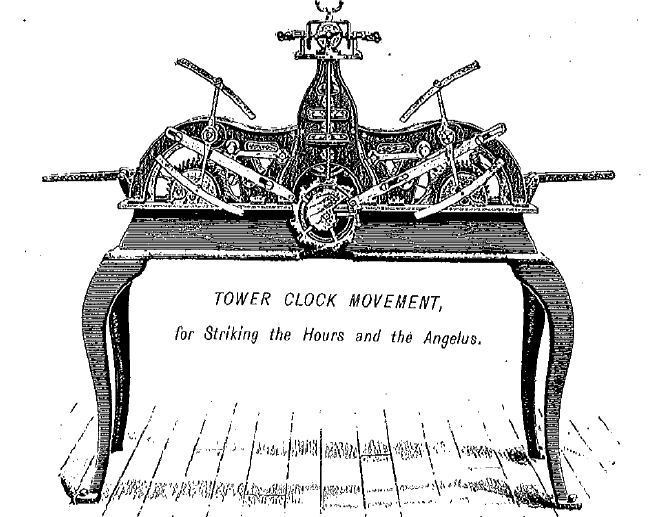
1887 catalog implies this is similar to the clock installed in St. Peter and Paul Cathedral, Providence,
RI in 1889. If so it would be a No. 3 striker with Angeleus attachment. However, the above clock
appears too small to be a No. 3, and is more likely a Model 0 Striker/Angelus.
The models are grouped in five basic categories; 0, 1, 2, 3 and 4. Each model could include striking
options, escapement options, pendulum temperature compensation and illumination regulation
options.
The earliest catalog in the NAWCC library picturing a full range of Howard tower clocks is ca. 1892. This is
based on the 383 Washington St. address which implies pre 1900. The introduction refers to 50 years of
experience so that would make it 1892.
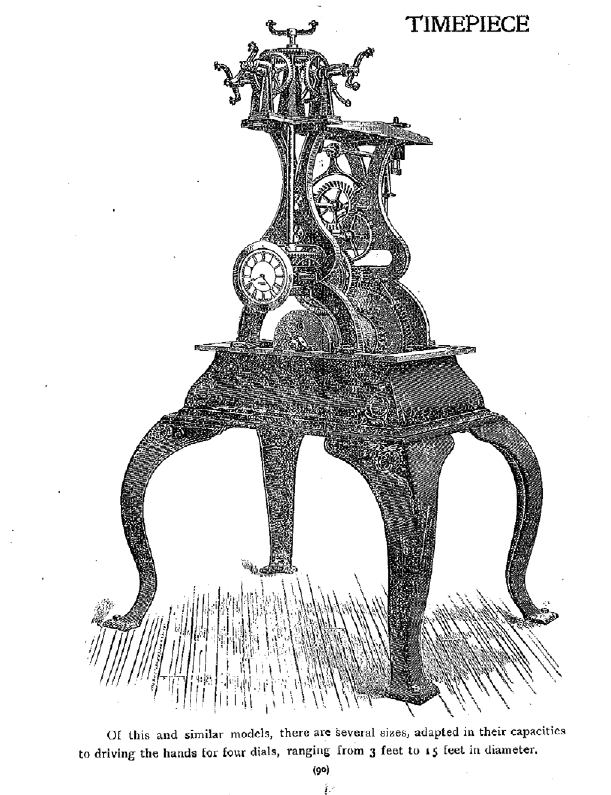
I think Models No. 1, 2 and 3 could take this form. Model No. 1 had a one second pendulum
and Model No. 2 usually had a 1.5 second pendulum.
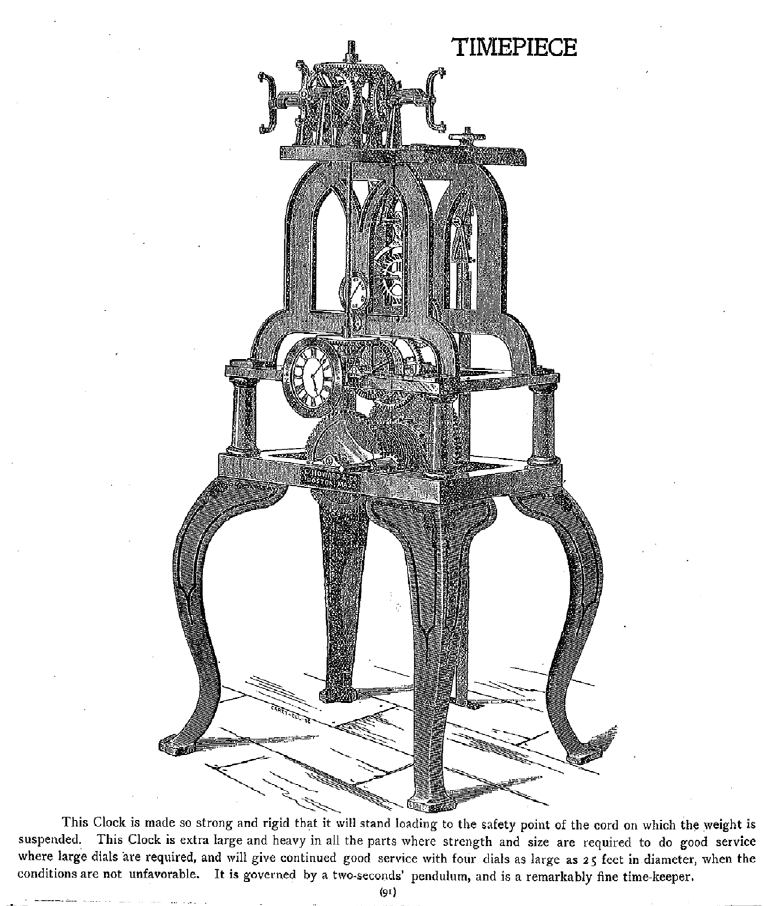
I believe this is a Model No. 4 with possibly a 2 second pendulum.
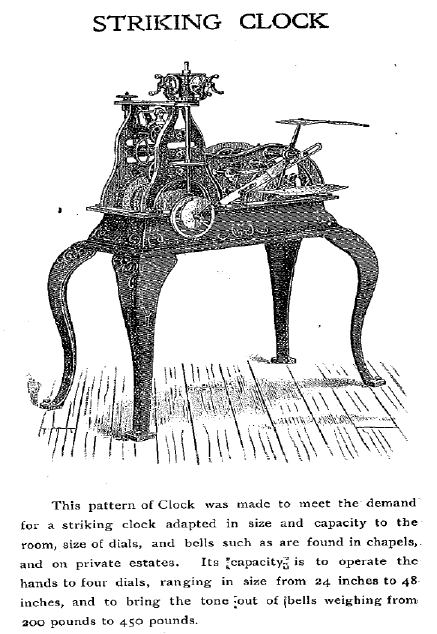
I would call this a No. 0 striker.
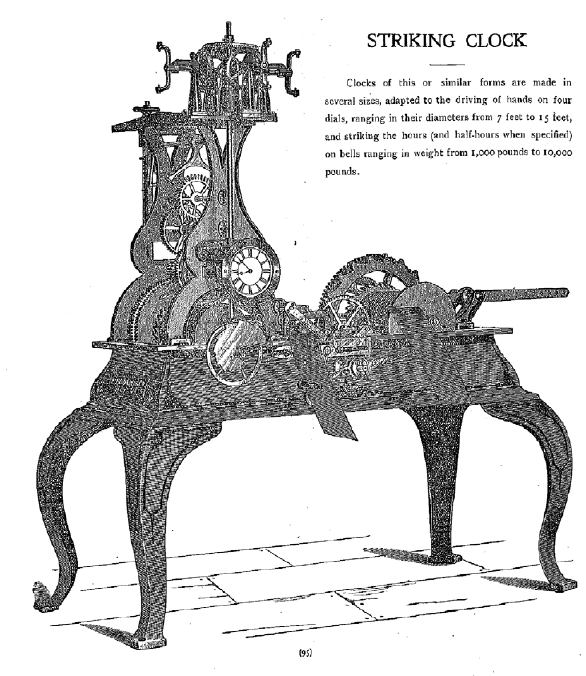
This could be a No. 1, No. 2 or No. 3 striker.
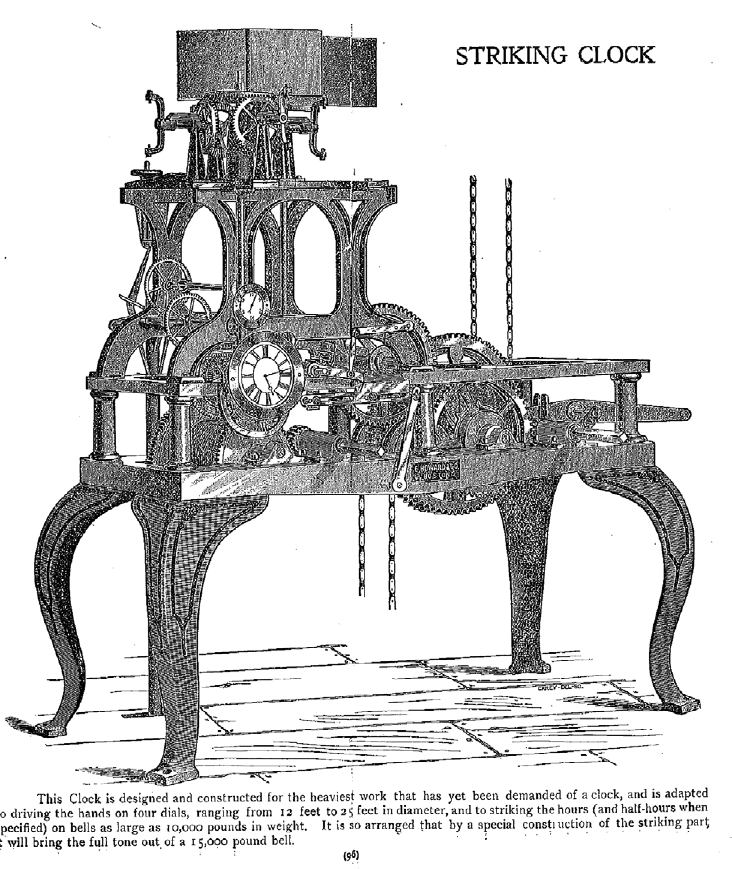
This is a No. 4 striker.
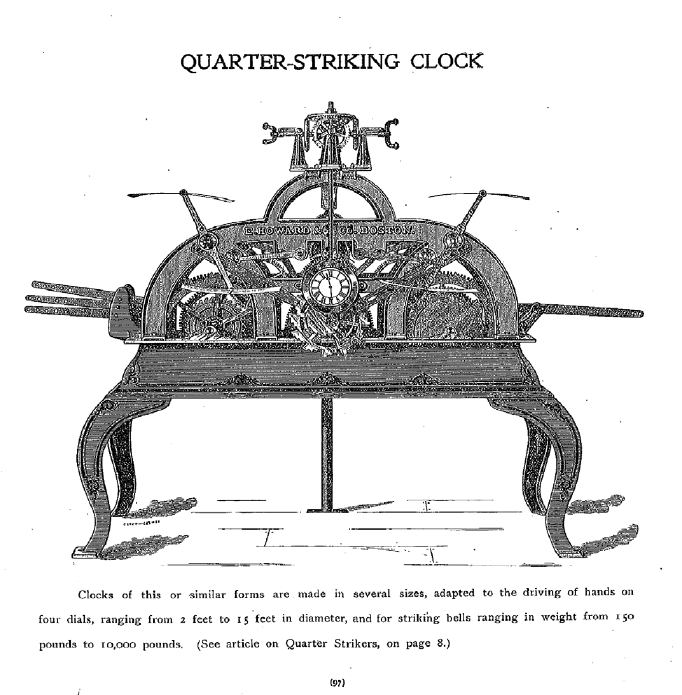
This is a No. 3 quarter striker.
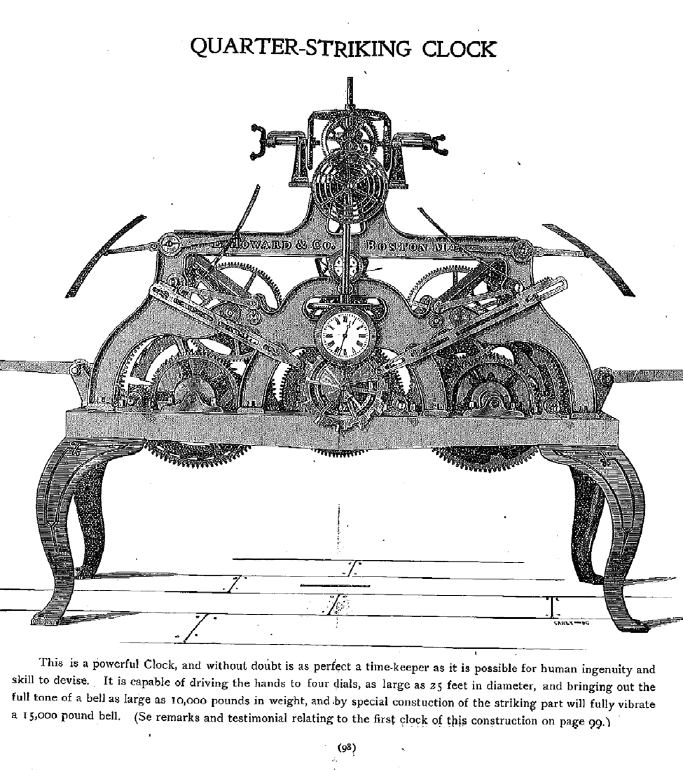
This is a No. 4 quarter striker.
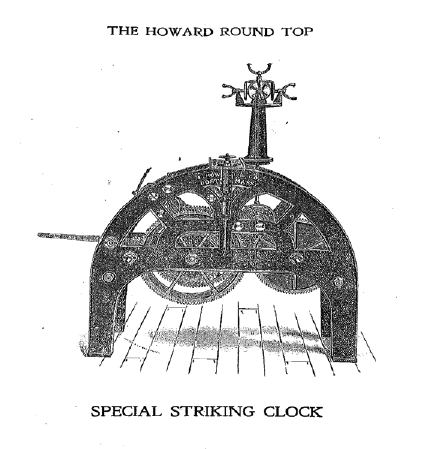
These models, commonly referred to as "hump backs", appeared in both the 1890 and 1892 catalogs.
I believe Howard has lumped these clocks in with the No. 1 striker sales totals in the Tower Clock record 1.
This indicates that these may have been one of Howard's most popular models.
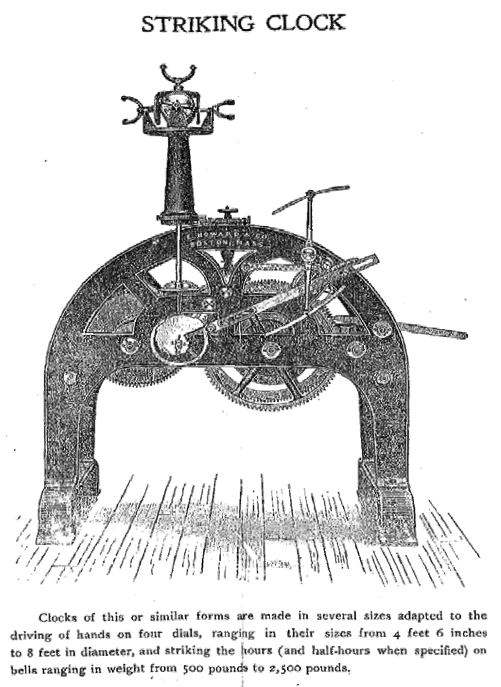
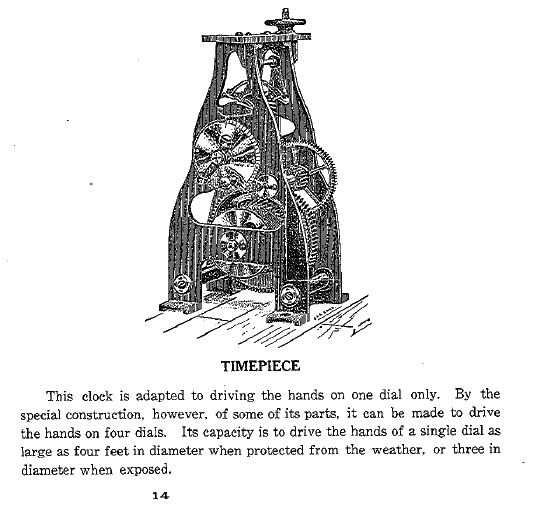
This is the first catalog appearance of what we now commonly refer
to as the "00" model. Howard makes no reference to this number. This
movement was used by Joseph Mayer in his first two-dial street clocks.
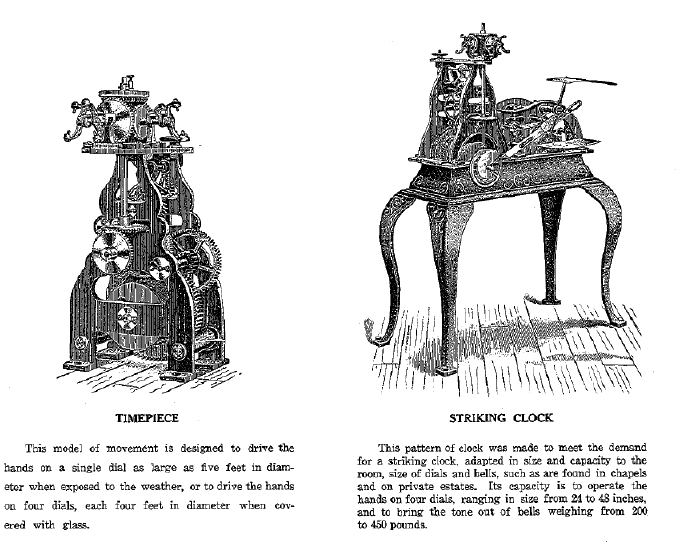
This is the first appearance of what I think of as the Model 0 timepiece
movement. Joseph Mayer used this movement in his large four dial street clocks.
The Model No. 0 striker was also pictured in the 1892 catalog. The time train frames on the striker are not the same shape as those on the timepiece. There are only four arbors in the striker timepiece train compared to five in the Model No. 0 Timepiece.
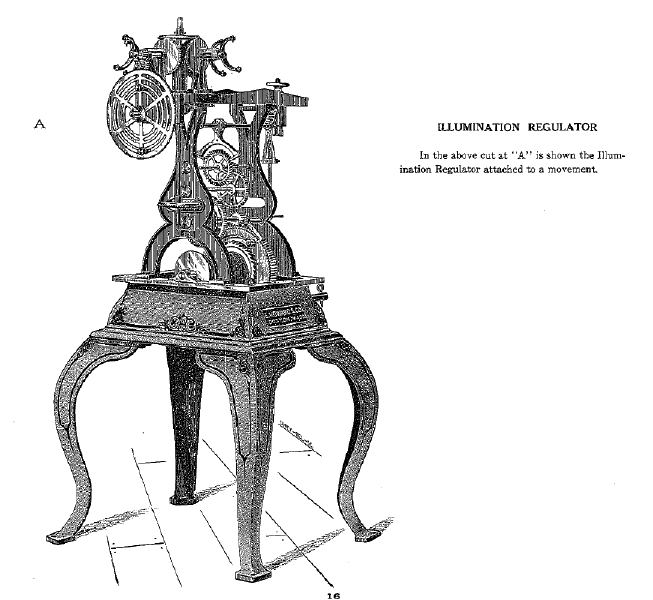
The illumination regulator on a Model No. 1 or No. 2 timepiece movement .
All other illustrations in the 1912 catalog are the same as in the 1892 edition.
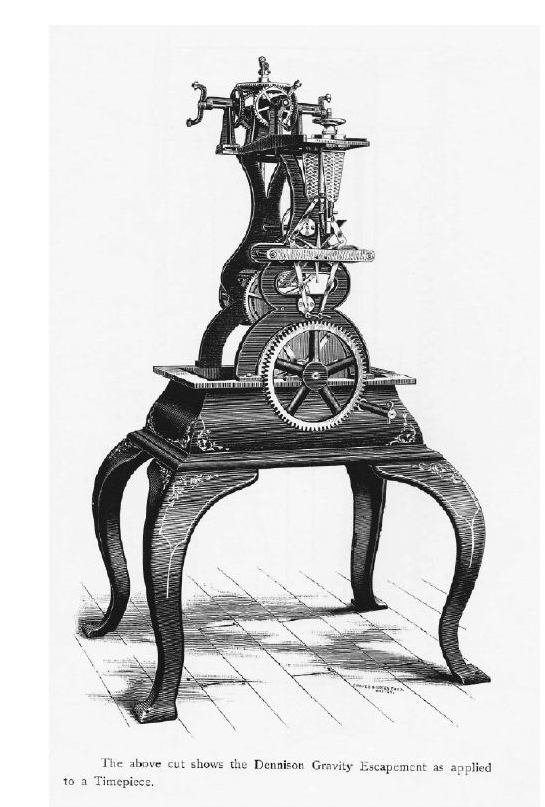
A Tran Du Ly reprint of a ca 1923 catalog includes engravings from a ca. 1890 catalog
of all the movements illustrated in the 1892 and 1912 catalogs plus the Denison
gravity escapement pictured on what could be a Model No. 1 or No. 2 timepiece.
Joseph Mayer installed several No. 2 timepiece and striker models with Denison
gravity escapements and 1.5 second zinc and steel temperature compensated
pendulums.
Note that the Howard catalog consistently misspells Denison as "Dennison".
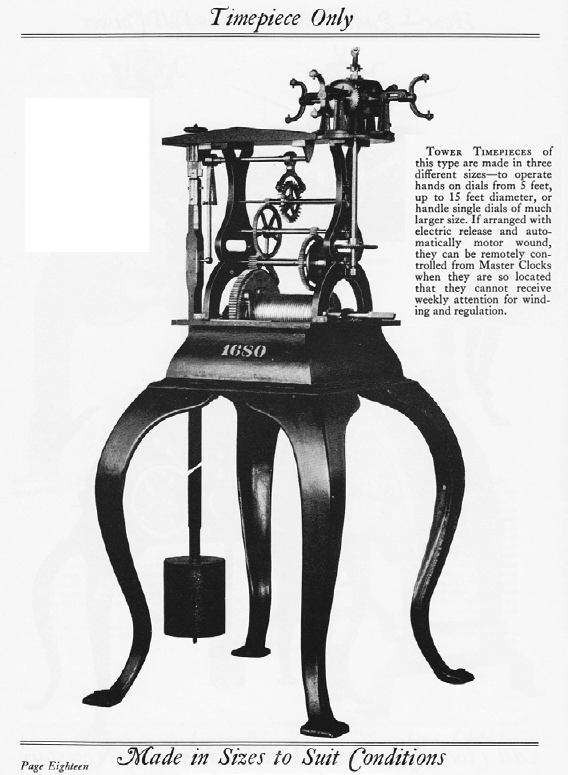
A 1923 catalog pictures a Model No. 1 timepiece sold to the Boston
West End Street Railway Co. in 1894. Note the one second
pendulum.
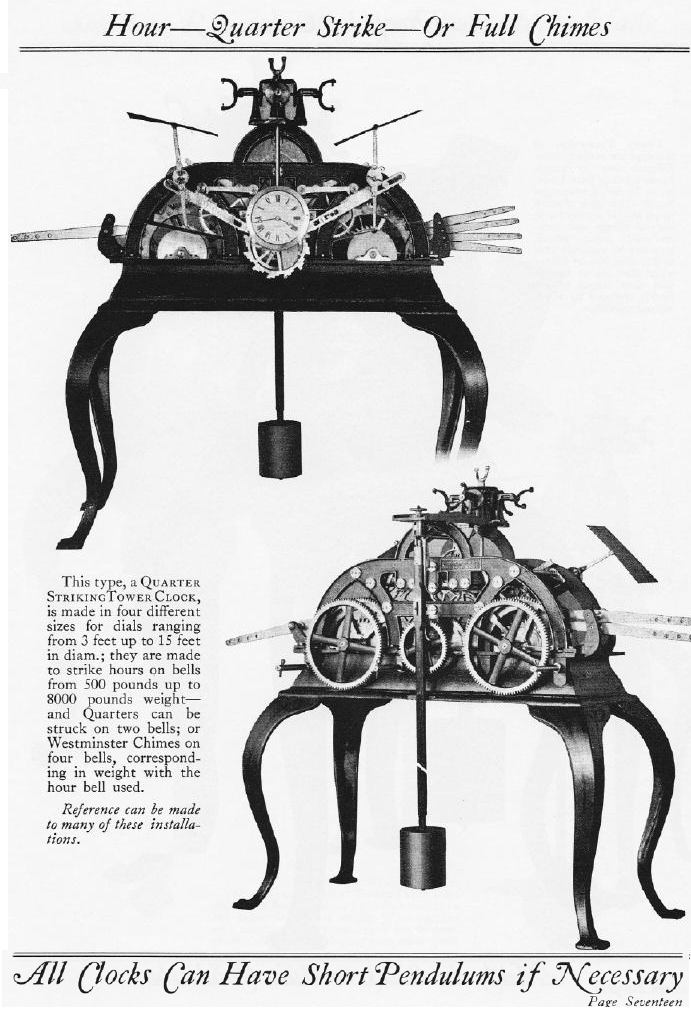
I think we have a Model No. 3 striker illustrating that all models can be equipped with a one second pendulum.
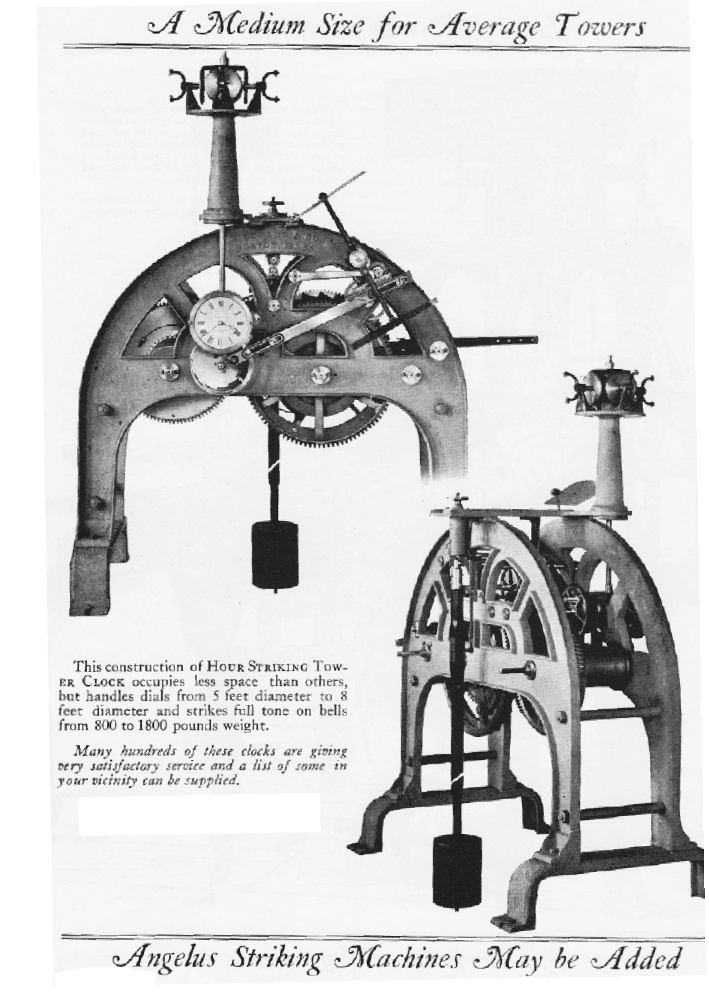
1923 catalog illustration of what I think Howard would call a Special striker,
possibly a No. 1 Special.
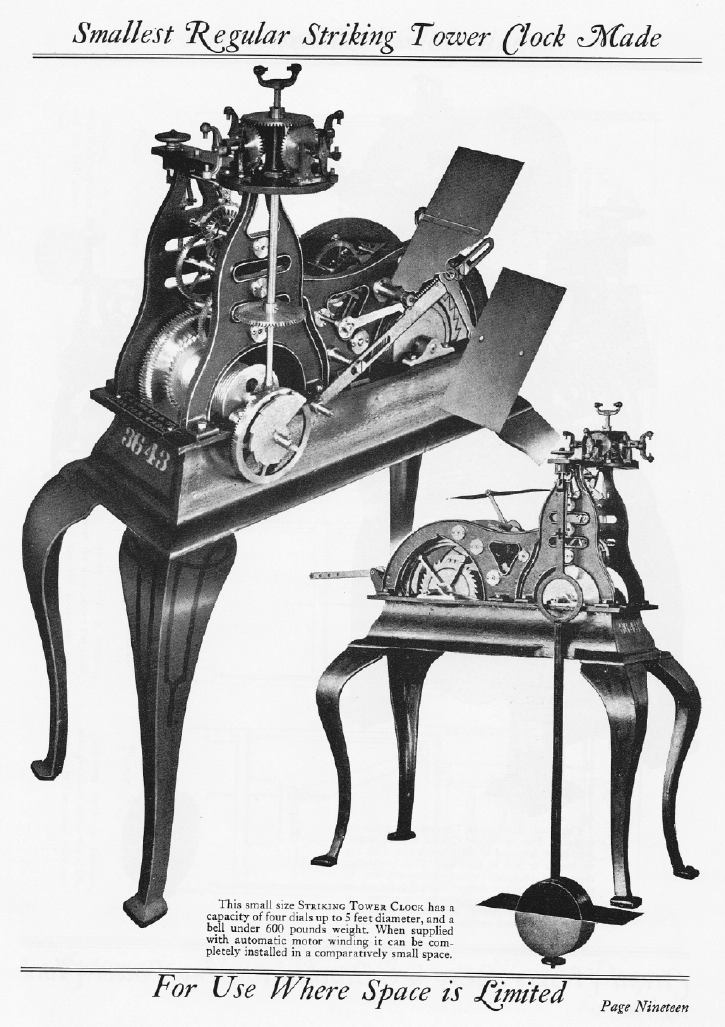
I would call this a Model No. 0 striker. Note ribbed casting for the frames. The
serial number seems very high for ca. 1923. I would put it post 1930.
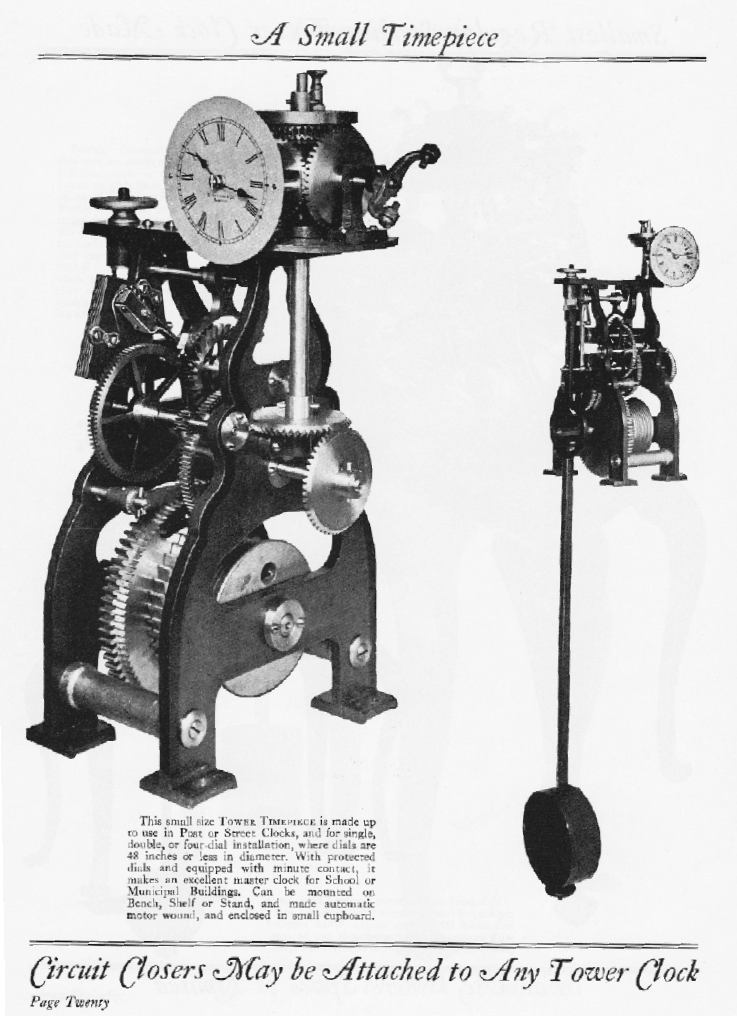
This is the first appearance in a catalog of what I term a four arbor version of the Model
No. 0 timepiece. Note that the frames are flat and the shape differs from the Model No. 0 striker.
The top piece of the two clocks appears similar.
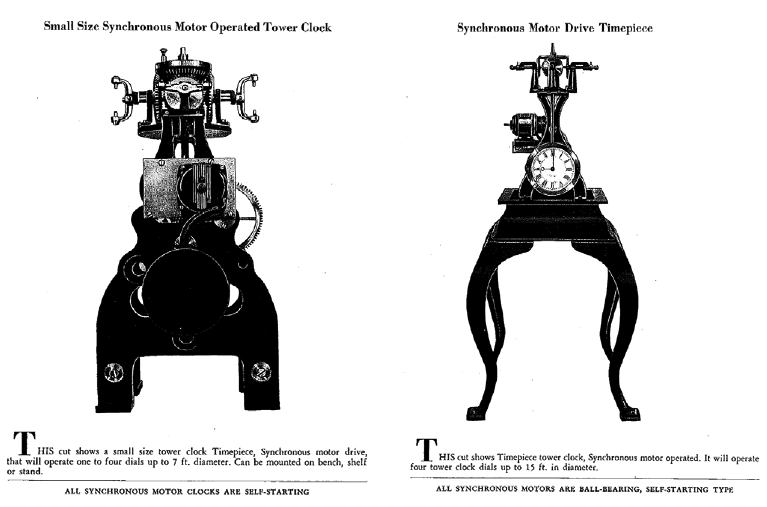
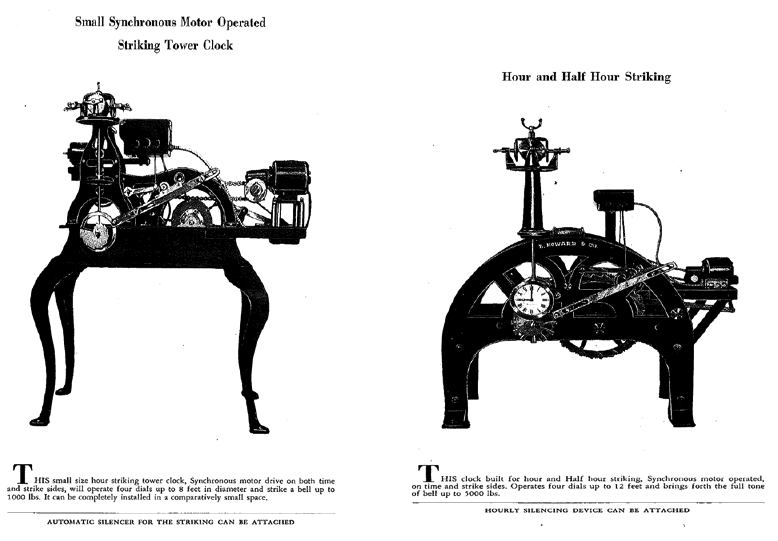
A ca. 1940 catalog shows various models with synchronous AC motor modifications.
Above No. 0 and No. 1 timepieces and below a No. 0 striker and a round top special.
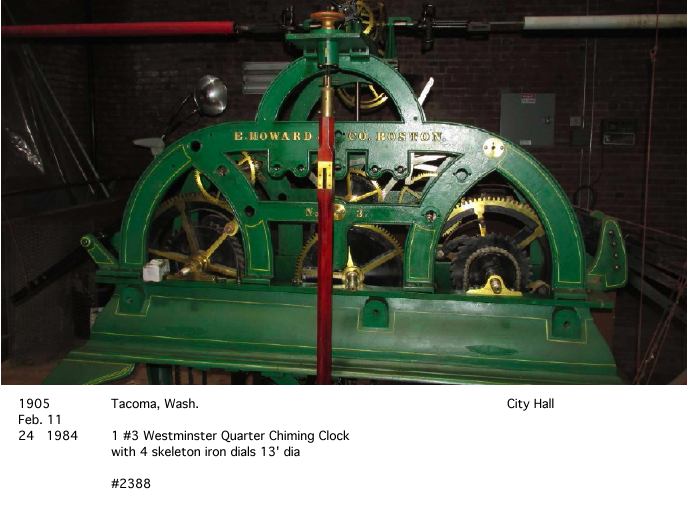
This is the Old Tacoma City Hall clock, unfortunately vandalized some years ago for brass.
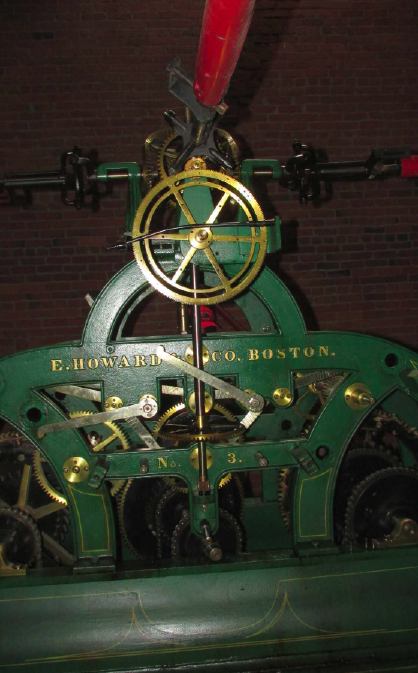
Howard has cast into both sides "No. 3".
The Old Tacoma City Hall clock showing the illumination regulator. The clock as installed
in 1905 was a manual wind and probably required winding several times a week.
Joseph Mayer added his patent winding sytem to the clock in 1912.

This is the Jefferson County Courthouse clock installed in Port Townsend in 1892. The Howard order
book calls it a No. 3. I have not visited this clock yet. I think this has a 2 second pendulum.
Photos courtesy of Archie Bacon
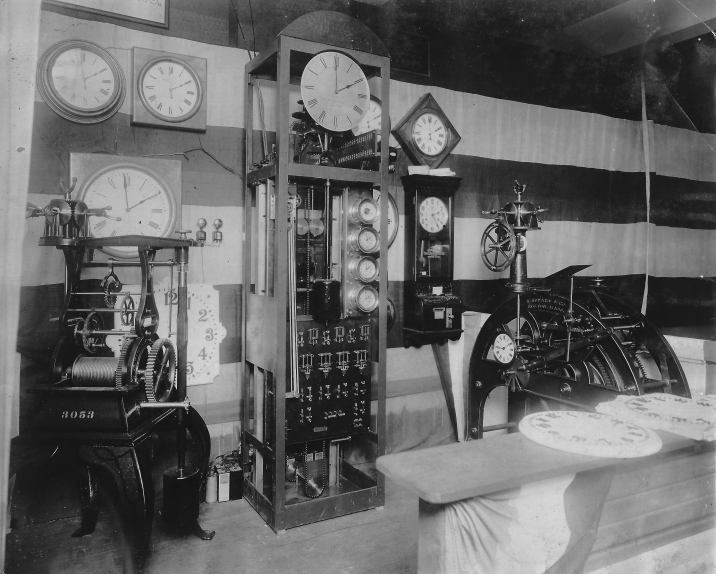
Photo courtesy of Don Bugh
This remarkable picture from the Howard archives shows a Joseph Mayer/Howard display
at a Seattle Industrial exposition in 1911 or early 1912. A No. 1 time piece on the left probably
found its way to the Bonney Watson Funeral Home in Seattle. The master clock was destined for Franklin
High School. It contains the four arbor version of a Model 0 movement with gravity escapement
and zinc and steel compensated pendulum. Two of these clocks survive. The striking tower clock movement
on the right would probably have been called a No. 1 Special Striker with illumination regulator. Its fate is unknown.
Return to Early American Tower Clocks.
Compare Donn's original version of this page if it still exists.
To comment on this page, please